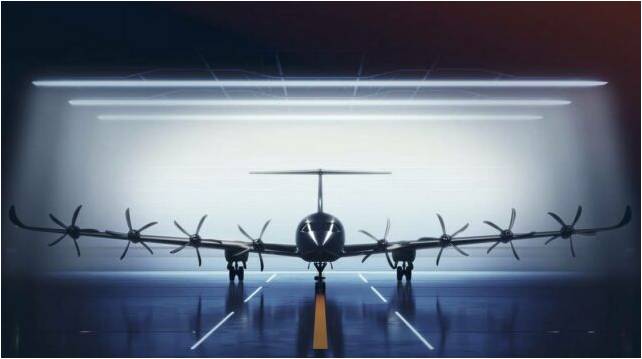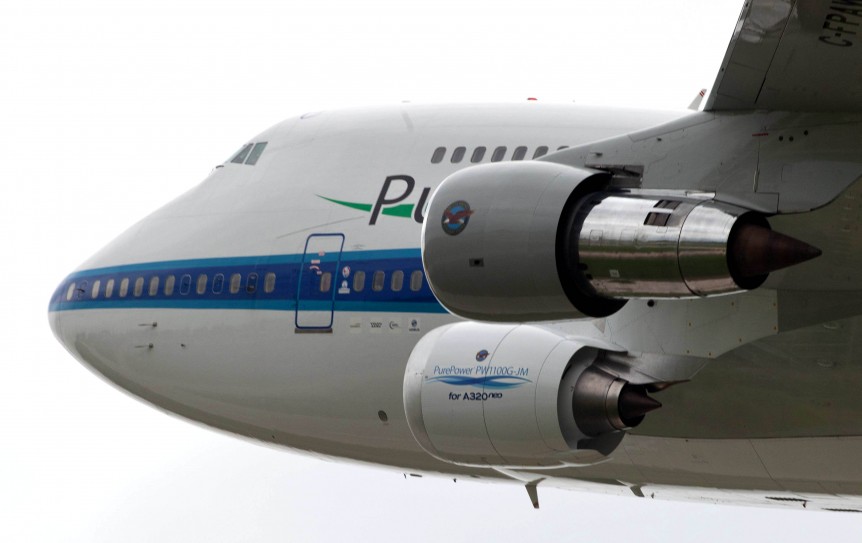What can carry 90 passenger 480 miles on battery power alone? Such a query flies in the face of others’ efforts to hybridize medium-range flight, but may be answered by Delft-based Elysian Aircraft. Their eight-motored, battery-powered E9X uses a backup turbogenerator only for reserves, putting a level of trust in the 365 Watt-hour per kilogram cells buried within the long, slender wing for safe transit. Graham Warwick’s Article Graham Warwick, writing for Aviationweek.com, explains that, “Breaking with traditional design principles, Delft-based Elysian says it has found design space where a large electric aircraft looks viable with near-term battery technology.” That kind of range for that large an aircraft seems extreme, but the E9X’s developers are using currently-available batteries to achieve their goals. Reynard de Vries, director of design and engineering at Elysian, explains, “If you want to make a significant impact on the sector as a whole, then you need to electrify flights up to 1,000 km [620 mi.]. Then …
Flying More Economical, Less Polluting Than Driving?
Ilan Kroo, in a 2014 Electric Aircraft Symposium presentation, showed that a “narrow-body” airliner (for example, the Boeing 737-800) is able to fly one passenger coast-to-coast on 29 gallons of fuel, at about 81 passenger miles per gallon. Driving responsibly, a carpool of four or five in a Prius could show greater operational economy, but take about 40 or more hours to make the trip (and lots of breaks) compared to the five hours in one jump it takes the Boeing. Worse, the same Prius is often stuck in gridlock traffic for short drives with only the driver on board. Even a hybrid’s mileage suffers under such circumstances. Several popular publications have taken up that “meme” in the last week. Nick Stockton, writing in Mother Jones’ environment section, informs his readers that airlines are already competitive with cars on a passenger mile basis, and that because “Fuel economy is hardwired into the airline industry’s DNA,” there could be benefits for …
Electric Green Taxiing System Quietly Enters Paris Air Show
Honeywell and Safran have teamed up to create EGTS International, a company that makes Electric Green Taxiing Systems for airliners. Honeywell has extensive experience with auxiliary power systems and Safran makes “world-class landing gear systems.” Put them together and you have the self-powered landing gear which made its public debut at the Paris Air Show this week. Others have been working on the same type of system, but EGTS is the first to show the technology off at an air show. Besides making the display Airbus A320 one of the quietest airplanes moving across the tarmac at the show, the system could save airlines up to four percent per flight on fuel burn. As the EGTS web site explains, “Because an aircraft’s main engines are optimized for flying rather than taxiing, they burn a disproportionate amount of fuel during ground operations. With a short- or medium-range aircraft spending up to 2.5 hours of its time on taxiways every day, …
Noise or Emissions – We Can Do Without Both
GreenAirOnline, a web report on mainly airline attempts to promote environmentally-friendly flying, has two not-unrelated stories in today’s edition. Noise abatement is a major issue for British airports, especially those in the southeast, according to the first story. Kate Jennings, Head of Aviation Policy Implementation at the Department for Transport, says the government recognizes that it is a “particularly contentious issue.” Even though noise has been reduced for individual flights, flight frequency has increased and measured noise footprints don’t always match the perceived noise levels that drew public complaints, Ms. Jennings reported. “That’s why at an ICAO (International Civil Aviation Organizaton) and political level we need to keep the pressure on to identify ways of further reducing noise and there needs to be an intelligent debate on the trade-offs between emissions and noise,” she told the recent UK Airport Operators Association (AOA) Environment Conference in London. British airports have been practicing several approaches to cutting both emissions and noise, including …


